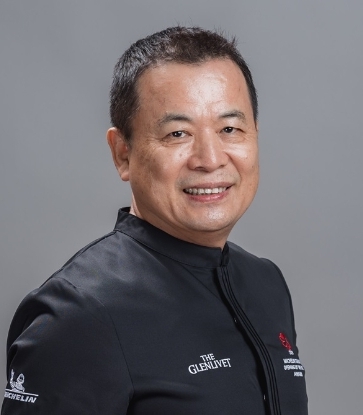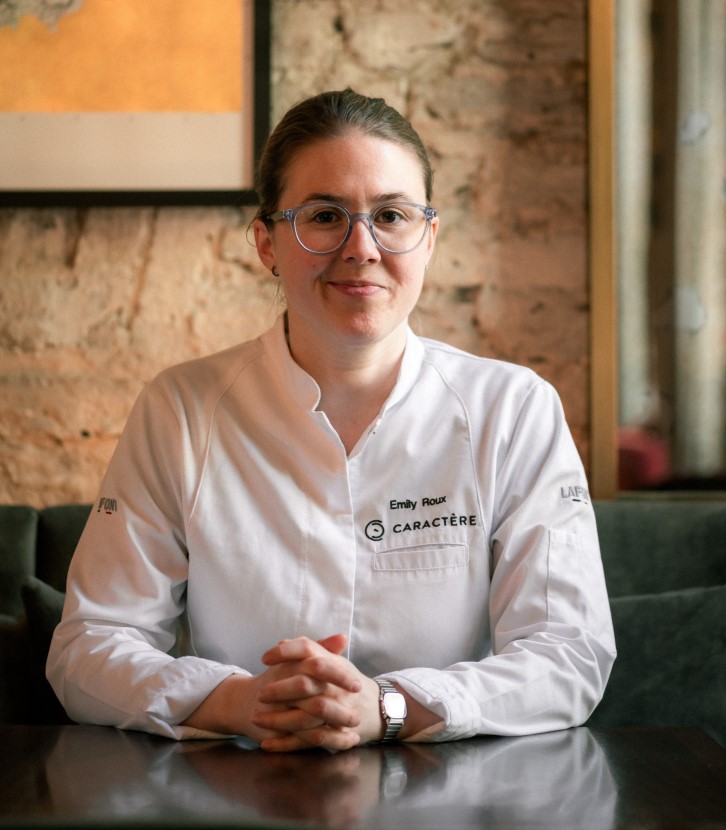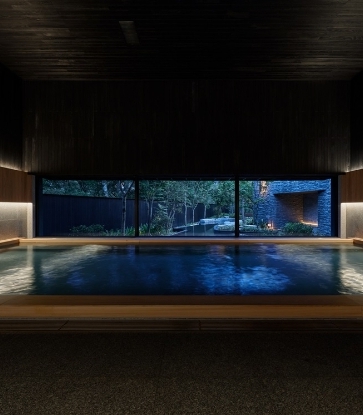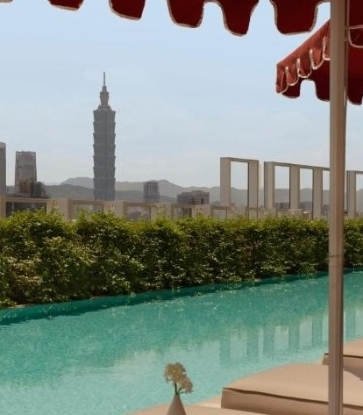As a young chef before he turned 18, Steven Su would often ask his seniors in the workplace one question: “What does cuisine mean to you?”
Now, the winner of the Young Chef Award in the MICHELIN Guide Taiwan 2023 and chef of new 1-Star restaurant Ban Bo, Su had wanted to know why he was here and the path his predecessors had taken.
"The answer I often got was the desire to serve delicious food to guests, but I think that is only natural and basic," Su says. "My question was about the core of it."

When he was working at Quay, a well-known Australian restaurant, he finally got an answer that surprised him — one that came from the restaurant’s chef de partie: "This may be the ten thousandth dish you have cooked, but how long people will remember this dish depends on your state of mind when you make it." From then on, Su finally understood his goal. “I hope that when life flashes before their eyes, my diners will remember this meal.”
With such ambition, it is no surprise that the experience at Ban Bo is meticulous and one of a kind.

At its core, the restaurant seeks to present the memories and impressions of Taiwan. To enter the main dining area, guests are given a stone to open a bird cage. The weathered wood bird breaks through the cage and rises up, symbolizing a release of their predetermined impressions of Taiwan as guests step up into the second floor dining room to experience it to the fullest.

The industrial-chic wooden frames and iron sheets simulate the narrow spaces of Taiwan's alleys and bus shelters; birds chirp while guests are waiting to be seated. Tatami that has been burned and dyed to show plays on light and shadow, while dinner plates and tableware are creative collaborations with Taiwanese craftsmen. Every detail of the menu was cleverly thought out by the chef and Cheng Lee, his business partner and restaurant manager. Inspired by a childhood game, the menu comes folded in the shape of a paper fortune teller, which opens up to show a map of the Great Taipei Basin in the Showa period.
RELATED: A Love Letter to the Land: Chef Kai Ho of the World’s First 3-Star Taiwanese Restaurant Taïrroir

A Montage of Taiwan
Su likens the cuisine at Ban Bo to a complete documentary on Taiwan, a film designed to be watched from beginning to end.
His dishes convey vivid images, colors, tastes, and even sounds. For example, with the "Taipei Vacation" theme this season, the main dish "Trail" was designed around the mountain herb dong quai (Angelica sinensis). Frozen slices of dong quai, rice wine, and wolfberry are placed on duck breast and steamed so it retains its moisture, simulating the flavor of herbal duck, and then paired with fried taro or Jerusalem artichoke and parsley.
When presenting the dish, servers push aside autumnal leaves made of sweet potato leaves in a large bowl, evoking the sound of crunching footsteps on fallen leaves. Inside the fallen leaves are angelica duck rice balls wrapped in small pine leaves, reminiscent of the small snacks hikers would bring when climbing a mountain. The tableware is also a part of the experience. Specially designed for this dish, the dinner plates are shaped like small hills, with purple clover and butterflies dotting the path; the accompanying sauce like gentle water ripples.
From the smells and sounds, to colors and textures, each diner may have different associations and resonance to the dishes served. Su explains that just like a montage in a movie, the blank space between is meant to be filled with each viewer’s personal interpretation.

The chef keeps three elements in mind when he creates his dishes: "skin, backbone, and soul". The skin refers to the presentation and appearance of the dish, the backbone is flavor and taste, while the soul is the experience conveyed by the dish. The three come into play in different proportions in every dish.
In a dish called "Coast" from the first menu, the chef placed a foam of ginger syrup on top of oysters as an example of putting taste first, inspired by the flavor combination of sweet ginger and vinegar often paired with crabs in Taiwan to ward off the cold. The idea then shapes the rest of the dish, down to its presentation, evocative of a coastal reef.
Every seasonal menu incorporates visual and conceptual thinking. The first season was a bird patrolling the entire Taiwan, giving diner’s a birds’ eye view of the island’s different landscapes and styles, from coastal reefs to distant mountains. The second season follows a short local vacation, taking diners through scenic temples and mountain trails.

From Dyslexia to MICHELIN Restaurants
Su reveals that having dyslexia as a child meant that he was not very good at reading or studying, but in a twist of fate, he discovered a flair for home economics in junior high school.
He later transferred to the technical class of a junior high school and went to Daojiang Senior High School of Nursing and Home Economics to attend classes once a week, and later also entered Kaiping culinary school.
After graduation, he went to Australia to study at Le Cordon Bleu, and trained at famed restaurant Quay. It was there that he discovered a new level of beauty in cooking and the magic of new flavor combinations. Later, he worked at Fat Duck, a three-MICHELIN-Starred restaurant in the UK, where he experienced the rigors and precision of a MICHELIN-starred establishment. Then, at three-starred Hajime in Osaka, the precise control of ingredients subverted his idea that fine dining inevitably involved waste. Every stepping stone nourished the development of his culinary philosophy.
Su recalls how, at Fat Duck, he would carry a timer with him to record how long it took him to do each task. He said it was a reminder to himself not to just perform mechanical actions when preparing meals, but to also turn on the switch and concentrate to see if he could do it better and faster.
Asked why he took the initiative to do this, he thought for a long time and replied: "I think cooking is something I don't want to lose." He believes that ambition is something that successful chefs cannot afford to lose.

The language barriers, high-pressure, and high-intensity work experience abroad inspired him to return to Taiwan to open a restaurant that could fully express his ideas, and he continued to accumulate ideas and skills along the way. His greatest motivation was to create dishes that even his grandfather could relate to and enjoy.
"Actually, it's not that it can't be done, it's just that I hadn’t thought about it,” he says, explaining that food needed to be connected to its roots, just like how his grandfather enjoyed sashimi. From then on, he began to think seriously about what he wanted to do.
To him, the greatest joy Ban Bo has brought is the opportunity to present another expression of Taiwanese flavor. (Photo: Radius Interior Design/Hey!Cheese).
RELATED: The Evolving Flavor of Taiwan’s Cuisine Through the Eyes of 4 MICHELIN-Starred Restaurant Chefs
As for the ultimate goal, the chef thinks deeply. He hopes to be remembered through his cooking as a means to live forever in the hearts of others and securing a place in history. "I hope that at least in my life, I can be remembered or prove that I existed,” he says sincerely.
Hero image courtesy of style master Taiwan/Answer Chen
This article has been translated by Rachel Tan from its original Chinese version.



















